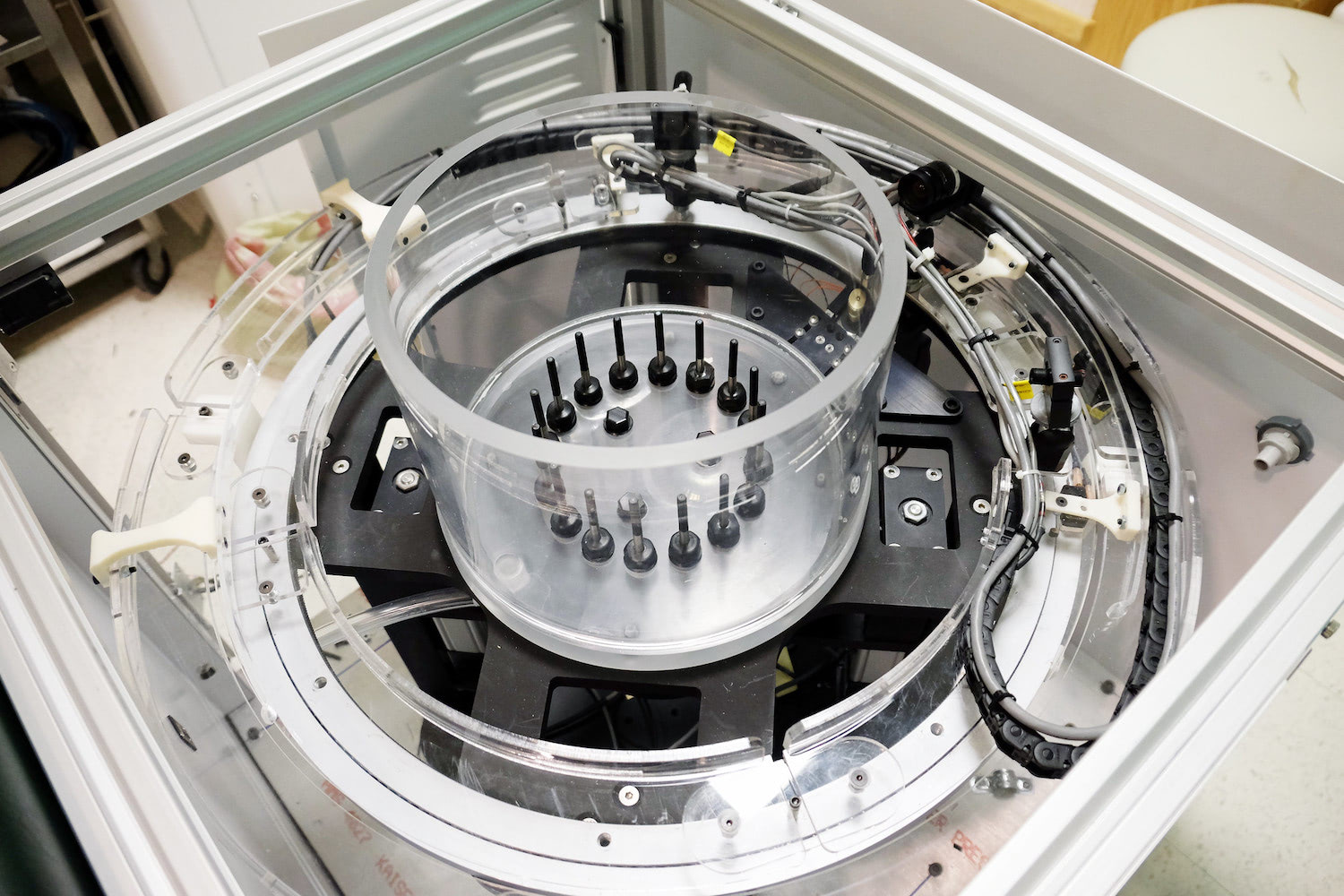- Undergraduate
Bachelor's Degrees
Bachelor of ArtsBachelor of EngineeringDual-Degree ProgramUndergraduate AdmissionsUndergraduate Experience
- Graduate
Graduate Experience
- Research
- Entrepreneurship
- Community
- About
-
Search
All Thayer News
$3 Million Grant May Result in Fewer Unnecessary Breast Biopsies
Mar 06, 2020 | by Julie Bonette
Dartmouth Engineers Partner with Industry to Develop a Better Breast Exam
Most people who undergo breast biopsies do not have cancer, according to Cancer.org, so a group of researchers are trying to minimize the number of unnecessary biopsies using an innovative technique that combines two commonly-used methods. Their approach may streamline the diagnostic process by providing substantially clearer imaging for doctors, potentially leading to more accurate diagnoses and reduced anxiety in patients.
An Academic-Industry Partnership (AIP) spearheaded by engineers at Dartmouth recently received a $3 million grant from the National Cancer Institute to pursue the idea of developing a multi-modal breast imaging platform that simultaneously uses Microwave and Magnetic Resonance Imaging (sMMRI), a first in the field.
“An MRI by itself produces very high-resolution images, but weak specificity, meaning it’s hard to determine if a suspicious area is malignant, while microwave imaging provides images with remarkable specificity, but suffers from poor resolution,” said multi-Principal Investigator (PI) Paul Meaney, a professor of engineering at Dartmouth. “So, the idea is to combine the two methods to get a more accurate rendering of the tumor or lesion zone, but it’s very difficult to do.”

Multi-modal breast imaging platform that simultaneously uses microwave and magnetic resonance imaging (sMMRI), a first in the field. (Photo by Shireen Geimer)
In addition to limiting the number of unnecessary biopsies of those who have suspicious mammograms, the approach could also eliminate the need for gadolinium, a contrast agent commonly used in MRIs that has come under scrutiny by the FDA as it’s shown to remain in patients’ bodies, including their brains, sometimes years after receiving the drug.
“The opportunity to potentially eliminate the need for gadolinium contrast injection would be fantastic for patients,” said multi-PI Keith Paulsen, the Robert A. Pritzker Professor of Biomedical Engineering at Dartmouth. “We’re hoping that our results are very positive and that this process could be commercialized so women would have access to it across the country.”
The Dartmouth team is partnering with experts at the Dartmouth-Hitchcock Medical Center and Quality Electrodynamics (QED), a subsidiary of Canon Inc. that will create custom equipment, as standard equipment has proved inadequate for the researchers’ needs. The resulting machine is expected to transmit about one milliwatt of microwave power, equivalent to less than one-thousandth of what a smart phone emits.
“Cancer research is a vital part of our fight for a cure, so I’m very encouraged to see this federal investment in Dartmouth’s ongoing efforts,” said Senator Jeanne Shaheen of New Hampshire. “These federal dollars will empower scientists and researchers with the resources they need to develop innovative and effective technology to improve detection and hopefully save more lives.”
The team has already performed a few preliminary but successful experiments for proof of concept, and hope to improve on their prototypes and complete clinical trials over the five-year grant period.
“The whole objective is to improve women’s health,” said Meaney. “I don’t think we’re going to cure everything, but if we can improve things, that would be great.”
For contacts and other media information visit our Media Resources page.
